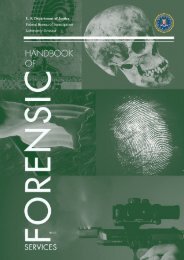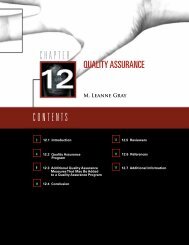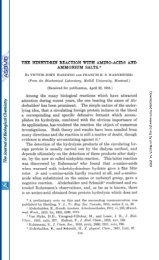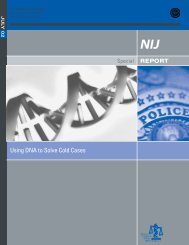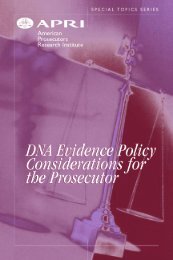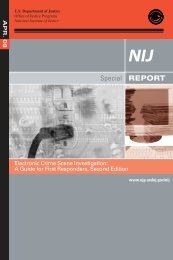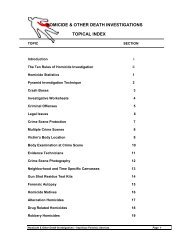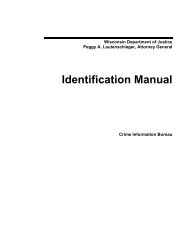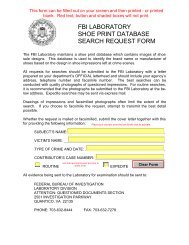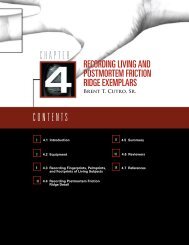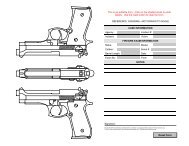Mass Fatality Incidents: A Guide for Forensic Identification
Mass Fatality Incidents: A Guide for Forensic Identification
Mass Fatality Incidents: A Guide for Forensic Identification
- No tags were found...
Create successful ePaper yourself
Turn your PDF publications into a flip-book with our unique Google optimized e-Paper software.
Section 4.6: <strong>Identification</strong> of Human Remains—OdontologyI. PreparationPrinciple. Dental identification is a scientificand legally accepted <strong>for</strong>m of humanidentification. The creation of the <strong>for</strong>ensicdental team be<strong>for</strong>e a mass fatality incidentis critical to a successful operation at theincident scene. The dental team leader isultimately responsible <strong>for</strong> the entire dentalteam. The dental team leader is also responsible<strong>for</strong> coordinating activities withother agencies (e.g., Disaster MortuaryOperational Response Team [DMORT],Federal Bureau of Investigation [FBI],National Transportation Safety Board[NTSB]) and <strong>for</strong>ensic identification disciplines(e.g., <strong>for</strong>ensic anthropology, fingerprints,radiology).Procedure. The designated dental teamleader is expected to—A. Establish a <strong>for</strong>ensic dental identificationteam that includes antemortem,postmortem/radiology, and comparison/computerteams.B. Create a dental organizational chartto ensure the proper scheduling andmanagement of the dental team.C. Establish sources of antemortem in<strong>for</strong>mationand liaison with the familyassistance center (FAC) (through theNTSB or another designated organization/agency)if available.D. Assign a team member to work withother <strong>for</strong>ensic identification specialistsand update the missing persons masterlist.E. Select the proper (printed and electronic)<strong>for</strong>ms:1. Use standard <strong>for</strong>ms <strong>for</strong> the entireoperation (see appendix A <strong>for</strong> linksto the <strong>for</strong>ms listed below):a. Domestic <strong>for</strong>ms (e.g., WinID orVictim <strong>Identification</strong> Program[VIP]).b. International <strong>for</strong>ms (e.g., DisasterVictim In<strong>for</strong>mation [DVI]).2. Consider computer software <strong>for</strong>storing and comparing records andradiographs/x-rays (Digital Imagingand Communications in Medicine[DICOM]-compliant if possible).F. Determine required equipment/supplies:1. Establish arrangements with suppliers.Mobile equipment can greatlyincrease the flexibility of the dentalteam.Consider the Disaster Mortuary OperationalResponse Team (DMORT) as a source <strong>for</strong>equipment, supplies, and personnel following amass fatality incident (see appendix B <strong>for</strong> in<strong>for</strong>mationabout DMORT activation).2. Inventory the material assets thatare available onscene to the dentalteam.Summary. Preparation and training be<strong>for</strong>ean actual mass fatality incident are recommended.Proper preparation can facilitatethe smooth and effective operation of thedental team.II. Collect and Preserve DentalEvidencePrinciple. In a mass fatality incident, bodiesmay be fragmented. <strong>Forensic</strong> odontologistsare valuable at the scene to assist inthe recognition, documentation, andpreservation during transport of dental37




